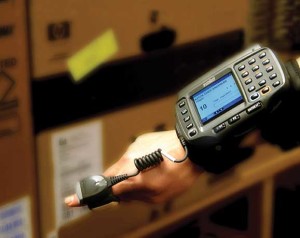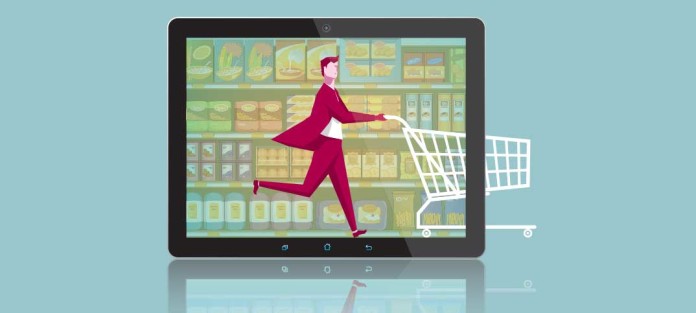The move into delivery is proving painful for many wholesalers. Ivan Durkin explains how IT can help take away many of the nightmares – and even make money.
In our game of bargains and margins, there is only so much that cash & carry operators can achieve through haggling with suppliers over prices and organising special offers.
Recently, we’ve seen the more forward-thinking wholesalers establish own-brand lines, develop catering initiatives, invest in loyalty schemes and symbol groups, and even extend into full-blown direct-to-consumer retail operations.
Now, we’re seeing a more fundamental development that looks set to become the norm – the addition of a delivery service or foodservice arm.
This would seem a very natural extension of a cash & carry business and the financial incentive is certainly there.
Take the food segment. The retail-dependent cash & carries are still crawling painfully out of recession. Meanwhile, their foodservice counterparts are relatively buoyant: consumers are starting to dine out again, and the free school meal initiative is bolstering demand for supplies delivered by cost-savvy caterers that can operate very lean and time-effective machines.
Nevertheless, for many wholesalers, the move into delivery is proving a painful transition. It’s bringing far more administrative headaches than they anticipated, as well as new logistical challenges. The revenues anticipated are also being hit by labour, fuel and fleet costs.
This is where it makes sense to turn to IT for help. After all, it was the digital revolution that stimulated the delivery upswing in the first place. According to IGD’s annual performance update on grocery and foodservice wholesaling, an increase in online sales has helped to drive cash & carry operators’ extension into delivery services to £1.7bn last year. This now represents 15% of the total value of the sector.
Web ordering
So why is online ordering proving such a positive force in wholesaling? During the recession, customers began to understand and assert their power in their relationships with suppliers. One consequence is a demand for more customer-centric policies and facilities, such as more convenient options for ordering. It is not overstating it to say that those wholesalers that respond to this demand will be the sector leaders in the next decade.
Additional ordering options should not be seen as a necessary but evil expense; rather, they are an investment in the customer, the future of the business, and efficiency and effectiveness. While there is enormous benefit in allowing customers to make orders whenever – and from wherever – it suits them, there is also a valuable by-product of setting up online ordering: the creation of a flexible, cost-effective online catalogue and timely incentives.
By making current stock information readily accessible, the time staff spend handling customer enquiries is reduced; there’s no postage; and prices and availability can be edited at no cost. Critically, the system’s promotions also target customers when they’re in ‘purchasing mode’. The increased effectiveness of special offers alone can pay for a new system.
Click & collect
Online ordering is proving its worth so well that we’re now starting to see wholesalers adopt a hybrid offering that has been successfully tested by retailers such as Asda, Boots, Sainsbury’s and Tesco. Click & collect hovers between in-depot shopping and delivery. Here, the order is picked by the wholesaler within a set time – typically three hours or next day – and made available for speedy collection at the customer’s convenience.
STL has launched a wholesale-specific click & collect solution, which again offers the valuable by-products of a flexible, informative catalogue and promotions delivery platform. It is an ideal solution for cash & carries moving into delivered wholesale, as it can support both customer groups: those unable to stay in for a delivery but unwilling to spend the time to shop in-depot; and in-depot shoppers wanting to test online ordering.
Mobile orders
Delivered businesses must also adapt to selling off-premises – either at the point of delivery or during a sales call.
For this, we’re seeing the emergence of cloud-based mobile ordering apps that take ordering convenience to a new level. These apps offer the functionality of PC-based online ordering systems on tablets or smartphones, but can also scan barcodes or QR codes and automatically add products into customers’ baskets.
The remote orders then synchronise in real time with the wholesaler’s central ordering system to prevent order or accounting discrepancies. This facilitates timely replenishment and reduces customer service administration.
However, the full benefit of these and traditional order-taking systems can only be realised if you can minimise the cost of providing the picking and delivery operation.
RF hands-free picking, paperless orders
Radio frequency (RF) systems are becoming more affordable each year and investing in them can pay substantial dividends.
For example, a wrist-mounted RF picking system saved L&F Jones Foodservices a day a week in labour costs by enabling the company’s telesales team to wirelessly and paperlessly dispatch orders directly to the pickers in the warehouse.
Furthermore, a colour-coded dashboard enables the company’s operators to monitor pickers’ progress in real-time, so they can distribute orders according to workload. This facility alone cuts out the downtime that used to be necessary to collect and confirm paper-based orders.
The company’s operations director, David Jones, says: “It’s surprising how much time we save by not having to stop and pick up a gun to scan an item before loading it. It’s one of the major benefits of the solution – it effectively gains us a day a week.”
Route planning
Once items are picked, route-planning systems help wholesalers such as Venus Wine & Spirit Merchants to set up default lorries, drivers and routes for each day of the week, and assign customers to the most appropriate route. They also help with load-planning, organising deliveries in logical batches that advise the loaders of pallet and cage requirements for the day, and enable the efficient loading of vehicles to support the day’s routes.
All this not only speeds up the loading effort but saves on fuel and driver time, while giving customers a reliable schedule they can plan around.
Integration is key
Outside the food sector, Jones Wholesale Business Store was another early surfer on the delivered wave. It recognised that it is the integration of picking, stock, sales and various ordering systems that optimises profitability.
With a fully integrated system, its pickers are able to dynamically receive accurate picking sheets, make real-time product enquiries, pick orders in a timely manner, log in goods, capture barcodes, conduct stock-takes and immediately confirm the status of orders. Then, because the data the pickers input updates Jones’ merchandise management system in real-time, the entire company – and, by extension, its customers – stays up-to-date regarding merchandise levels, sales and the progress of orders.
Company director Simon Allitt says: “We spend a lot of time and money putting quality data into our systems. By enabling us to collate, query and extract data from across the business as meaningful information in different formats, STL is effectively helping us to integrate and inform our entire team.
“That’s a powerful return on investment.”








